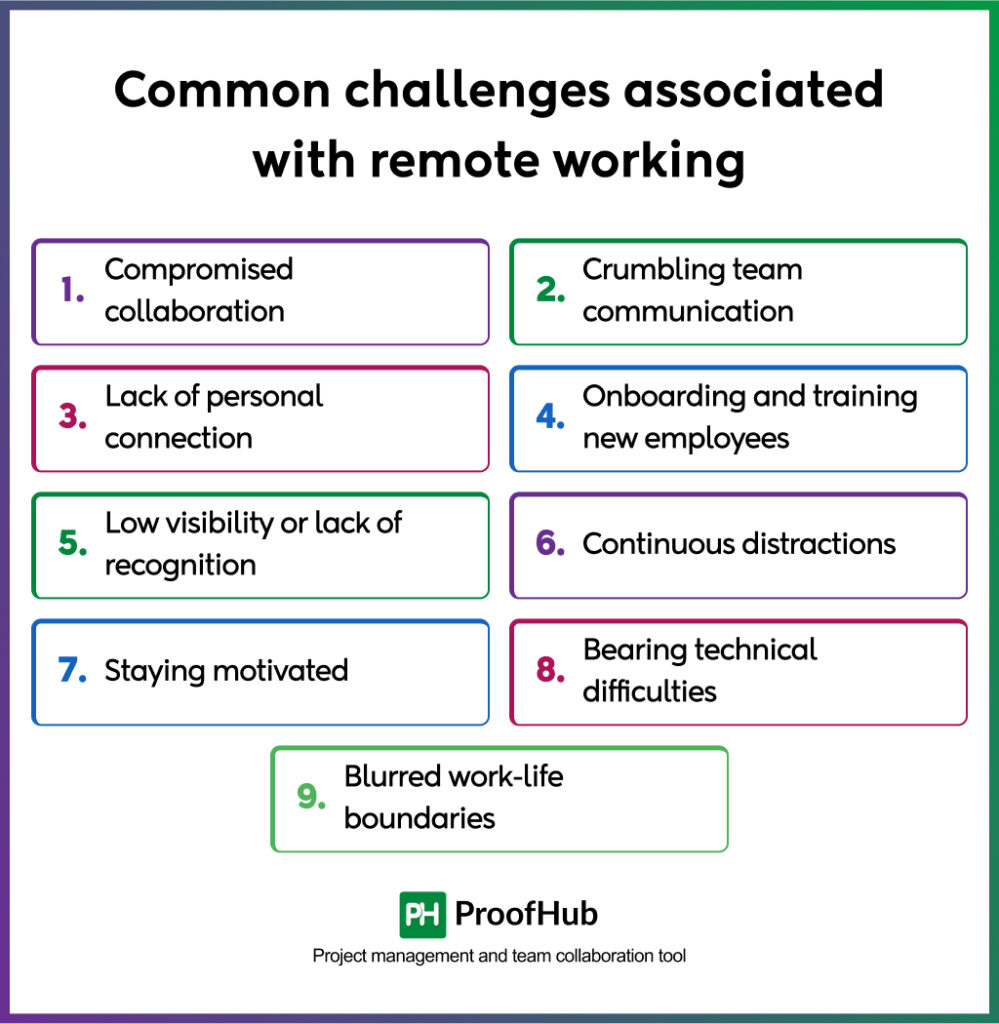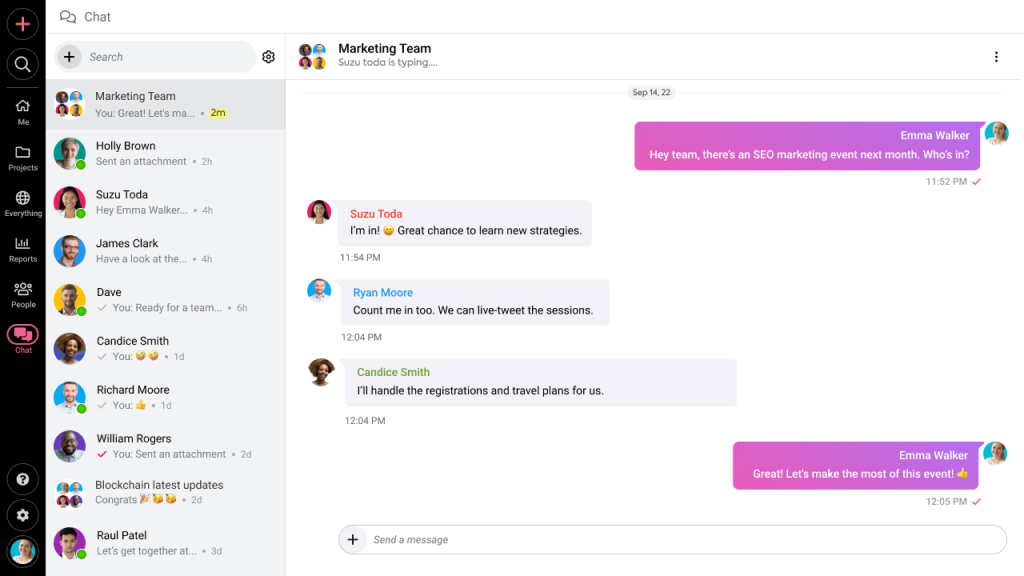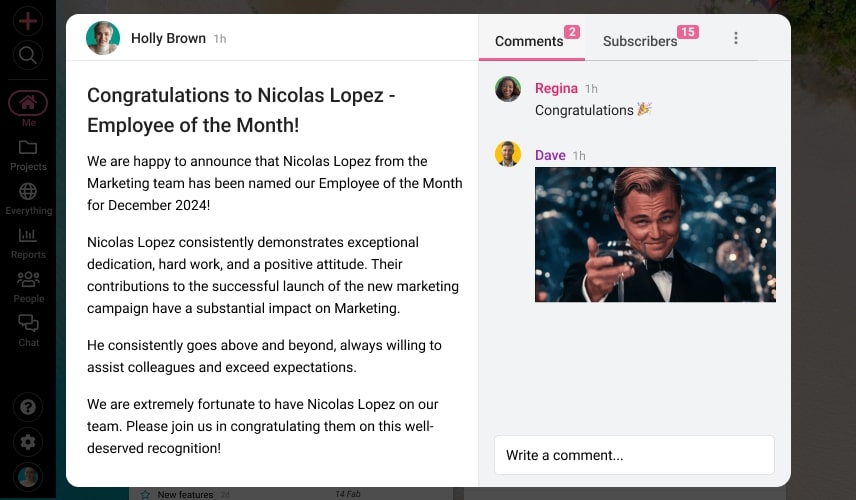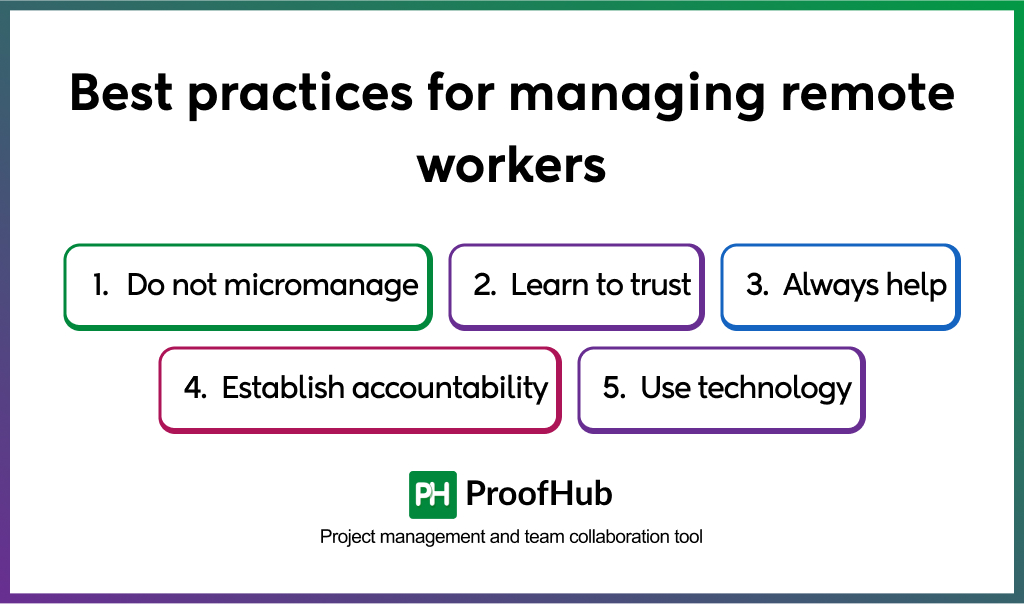Back in 2020, remote work felt like the future. What began as a necessity quickly proved its value, offering significant benefits, like flexibility, reduced overhead, and no commutes.
But as the years passed, the conversation as well as the adoption rate shifted. Despite the initial momentum, the percentage of remote workers fell slightly in 2022(Still higher than in 2019). This led to many companies giving way to partially remote (hybrid) work arrangements, requiring employees to be there for three to four days in the office.
Organizations that once rushed to adapt and redefined productivity metrics soon encountered some unforeseen remote work challenges – siloed teams, communication breakdowns, and the blurring of boundaries between work and personal life.
From how I perceive remote work today, the shift has been transformative, bringing both opportunities and complexities as employees split their time between home and the office.
In this article, I will explore the challenges of remote work in today’s context, offer practical solutions, and share best practices to help managers create a more sustainable remote work environment.
Learn key pros and cons of working remotely for better productivity
9 Remote work challenges and their solution
Even though 95% of employees seek remote work opportunities in some way or another, some challenges question its effectiveness to the very core. And that is the reason, strategically addressing them becomes crucial to finding the common ground – one that brings leaders substantial outcomes and employees the balance they need.

Here are some common remote working challenges and practical solutions to overcome them and obtain the perfect alignment:
1. Compromised collaboration
Collaboration isn’t always planned – it often happens in instant and spontaneous moments. It can be a quick discussion in the hallway, casual conversations when on seats, or a brainstorming session over coffee. These small exchanges are as important as formal discussions in meetings – whether in a conference hall or via video calls.
Remote workers, however, often are left out of such organic moments – interactions that spark problem-solving and innovation. Also, it can quickly turn out to be a missed opportunity as you might not know that one day key decisions will be made, and it might be the day you aren’t in the office space.
This lack of participation causes delays, frustration, and wasted time trying to catch up on the conversations you were not a part of. Over time, it can cause disengagement, making employees feel isolated and less- productive.
How to overcome?
Collaboration shouldn’t be left to chance—it should be intentional.
Establish structured touchpoints where teams can sync regularly, ensuring that everyone, regardless of location, stays informed, aligned, and engaged.
Encourage cross-functional “open office hours” where employees can drop in for impromptu discussions.
2. Crumbling team communication
Effective communication is crucial for many organizations – not just for remote or partially remote workers. Yet, it remains a persistent challenge, as the 2023 Buffer survey confirms that 15% of remote workers struggle with communication and collaboration.
As companies operate across multiple locations and time zones, teams often feel distant and disconnected due to a lack of face-to-face interaction and asynchronous workflows. These gaps lead to miscommunication, information gaps, silos, scattered updates, and delayed decision-making, causing frustration and inefficiency.
In hybrid settings, where some team members work from the office while others are remote, the divide becomes even more pronounced—leading to exclusion from key discussions and a lack of priorities.
How to overcome?
While virtual meetings, video conferencing, and emails seem like practical solutions, using the right channels matters just as much as the frequency of communication.
For example, using centralized project management tools like ProofHub ensures that conversations stay organized. With built-in chat, discussion boards, and shared notes, teams can communicate seamlessly without drowning in endless email threads or missing critical updates.
Adopt a structured approach to communication by hosting weekly team updates, maintaining transparent documentation, and scheduling one-on-one check-ins. This practice streamlines communication without overwhelming teams with unnecessary interactions.

Discover our expertly compiled list of best team communication tools to keep your teams connected
3. Lack of personal connection and interaction
Working from an isolated space strains an individual’s ability and desire to engage socially, especially if you are a people person. Shared moments and interactions that promote connection and interaction, like lunch breaks, casual office chats, and team outings, become scarce for obvious reasons.
This lack of social engagement makes remote workers feel distant and disconnected from each other, causing daily loneliness and a sense of isolation in their unlively workspaces.
According to Ringover’s Loneliness at Work Survey, when 1,154 US adults were asked a simple yet revealing question, “Do you feel lonely at work?”, their responses highlighted some surprising insights:
| Response | Remote | Hybrid | Office |
| Never | 6.4% | 6.9% | 16.1% |
| Rarely | 16.4% | 27.6% | 23.8% |
| Sometimes | 53.2% | 56.9% | 48.0% |
| Often | 24.0% | 8.6% | 12.1% |
How to overcome?
While physical distance is a reality, you can introduce meaningful interactions to stay socially connected and get the dose of human interaction you’ve been missing while working from home.
Encourage virtual team-building activities, like remote coffee chats, online game nights, or even co-working sessions.
You can also plan in-person team retreats at least once or twice a year to strengthen relationships and redefine your company culture.
4. Onboarding and training new employees
Remote and partial remote settings work fine until it comes to bringing new hires into the environment.
According to a survey, more than 60% of remote workers are more likely to feel undertrained and disoriented after their onboarding process.
The lack of structured onboarding makes it difficult for them to connect with the company culture, leading to lower employee engagement and higher turnover.
How to overcome
Create a well-designed onboarding process that ensures clarity and engagement from day one.
Also, you can use interactive training methods like virtual mentorship, learning modules, and real-time sessions to help new hires ramp up and feel connected from day one.
Read more: 5 Ways to build an all-inclusive onboarding experience
5. Low visibility or lack of recognition
“Away from sight, away from mind”.
While that is not always the case, there’s a high chance that top-performing remote workers may remain partially visible—or completely invisible—to you. And that is a major concern.
Regardless of how many hours your remote team members put in, how effectively they contribute, and how consistently they deliver results, their dedication and performance often remain hidden behind the screens.
Compared to their counterparts in traditional offices, remote employees are less likely to receive spontaneous recognition, casual praise, or leadership acknowledgments. This lack of visibility and recognition can be deeply demotivating, ultimately affecting their engagement and performance.
How to overcome
To promote fairness and ensure employees reach their full potential, make it a habit to acknowledge and recognize every team member’s contributions—regardless of where they work. Implement structured recognition programs, give frequent shout-outs, and celebrate milestones publicly.
Being a CEO myself, I’ve seen firsthand how a lack of recognition can erode motivation. That’s why we make a conscious effort to highlight achievements through company-wide announcements. This not only boosts morale but also fosters a culture of appreciation and belonging.

Try these effective employee recognition ideas to keep your team’s engagement high and motivation strong
6. Continuous distractions
Remote work environments are believed to promote focused work, but in contrast have their share of distractions – household emergencies, unexpected visitors, or kids breaking into your workspace after school. And to be clear, it’s nearly impossible to make all the distractions just go away.
While some interruptions are unavoidable, others are intentional. For example, a survey found that 72% of employees do household chores, 37% run errands, 23% visit a doctor, and 22% take naps during work hours.
In hybrid work, on the other hand, distractions take a different form, with employees juggling shifting routines and frequent social interactions in the name of collaboration.
How to overcome
Encourage your team to create a distraction-free workspace, use focus-enhancing techniques like Pomodoro, and introduce dedicated “no-interruption” work periods to maintain deep focus.
You can also encourage using a centralized work management solution like ProofHub for seamless collaboration and work without context-switching. By keeping projects, tasks, and communication in one place, teams can minimize disruptions.
Also, employees can use the tool to be mindful of how they spend their time across tasks. By monitoring and tracking their time, they can make necessary adjustments to cut off distractions and prioritize work.
Additionally, provide training on effective time management strategies to help teams stay productive without feeling overwhelmed by constant distractions.
Read more: How to avoid distractions at workplace
7. Staying motivated
Remote work removes the external motivators that keep teams motivated. Working in an environment where the scope for collaboration is minimal, no one is pushing you to work harder, and there’s little to no immediate feedback, can deeply hamper your zeal to stay productive.
Similarly, even though employees get some in-office exposure in partially remote settings, their motivation levels remain inconsistent and often overlooked. And that is why 55% of the company leaders see motivation as a major concern.
This absence of a structured environment and uneven experience can lead to distractions, feelings of isolation, and fluctuating motivation levels.
How to overcome
Motivation doesn’t necessarily come from within – managers play a huge role in influencing it.
Define clear goals and expectations, track team performance, and conduct regular 1:1 interactions to keep employees motivated and aligned with the bigger picture.
Also, by encouraging peer recognition and celebrating small wins, you can sustain long-term motivation in remote working employees.
8. Bearing technical difficulties
In remote work settings, where some employees are provided with necessary equipment and subscriptions from the organizations, the majority of workers use their own devices. This disparity creates a gap in terms of manufacturing efficiency.
Unlike traditional office environments with readily available IT support for technology issues, remote workers waste time troubleshooting on their own – whether it is a failed internet connection or system malfunction.
And to make matters worse, after these unexpected disruptions, remote employees are sometimes expected to extend their working hours to compensate for lost time and fulfill their commitments.
How to overcome
Give remote employees the same tech advantages as in-office employees. Ensure they have access to reliable hardware, IT support access, and high-speed internet stipends to ensure smooth operations.
Also, use cloud-based solutions to sync work in real-time and prevent data loss for seamless workflow continuity.
The key is to minimize downtime so employees can stay productive instead of battling tech issues.
9. Blurred work-life boundaries
Even though remote work provides flexibility, it also makes it harder to unplug yourself from the work at the end of the day.
Unlike a traditional office setup, there’s no natural transition that signals the workday is over – no commute, no physical office closure, and no colleagues packing up for the day.
The absence of these cues makes it difficult to step away from work as soon as the clock hints at the end of the day. According to a survey, 49% of employees who seldom operate from home felt somewhat burned out due to blurred boundaries between work and personal life.
In hybrid work settings, the inconsistency of switching between home and office gives birth to an ‘always-on’ mentality, making it even harder to disconnect. This constant shift greatly impairs both your physical and mental well-being.
How to overcome
Whether in a remote or hybrid setup, the key is to establish clear boundaries—physical in remote work and structural in hybrid setups.
Encourage teams to start their day with intention and log off at a consistent time, regardless of location. Also, motivate them to communicate their availability clearly to discourage any after-hours work expectations.
Learn proven work-life balance tips to maintain sanity and keep your productivity high
Best practices for managing remote workers
Having led a remote team for a substantial time, here are some core practices that were effective back then and remain just as relevant today.

- Do not micromanage: When managing remote employees, avoid constantly overseeing and controlling their every move. This only leads to frustration and a lack of autonomy, ultimately hindering their productivity and creativity.
- Learn to trust: Trust that your employees are actually working -not just online for the sake of being present. Give them the freedom to deliver, and not doubt their intentions. Instead of focusing on hours worked, prioritize the outcomes and impact.
- Always help: When working remotely, employees lack immediate access to in-person support like in-office setups. As a leader, be their go-to resource—someone they can turn to for guidance, problem-solving, or even just a quick chat when they need it.
- Establish accountability: Instead of micromanaging remote teams hold them accountable for their responsibilities and deliverables. This culture creates a self-driven team that delivers without constant need of supervision.
- Use technology: Use the right collaboration and project management software to streamline workflows, track progress, and maintain seamless communication—all essential for remote success.
Conclusion
No doubt, the remote work concept has several benefits – both for employees and businesses.
However, this arrangement can be as challenging as it is rewarding, again for both. Various remote work challenges exist that hinder its effectiveness, and quickly turn into roadblocks if left unaddressed.
From maintaining clarity to ensuring seamless communication, promoting collaboration, and building accountability, the right strategies can make remote work truly effective.
Frequently asked questions
How can managers support remote employees?
There are several ways that managers can take to support remote employees:
- Offer virtual training and sessions to promote a culture of continuous learning and improvement.
- Establish clear documentation of goals, expectations, and performance metrics to bring clear understanding.
- Host regular check-ins and virtual meetings to keep employees engaged and on track.
- Respect employee boundaries by avoiding after-hour work requests and calls.
- Provide the right tools, resources, and equipment to ensure seamless work progress.
How can I prevent burnout when working from home?
A- You can prevent burnout while working from home by following several strategies:
Unplug yourself completely after working hours – both physically and mentally.
Establish clear boundaries for your ‘focused working hours’ and communicate them with your team and family members.
Identify your peak productivity hours and dedicate that time to your work priorities.
Take care of your well-being through regular breaks, exercises, and mindful practices to remain energetic and consistent.
Stay connected with your colleagues to maintain a sense of community and belonging.

